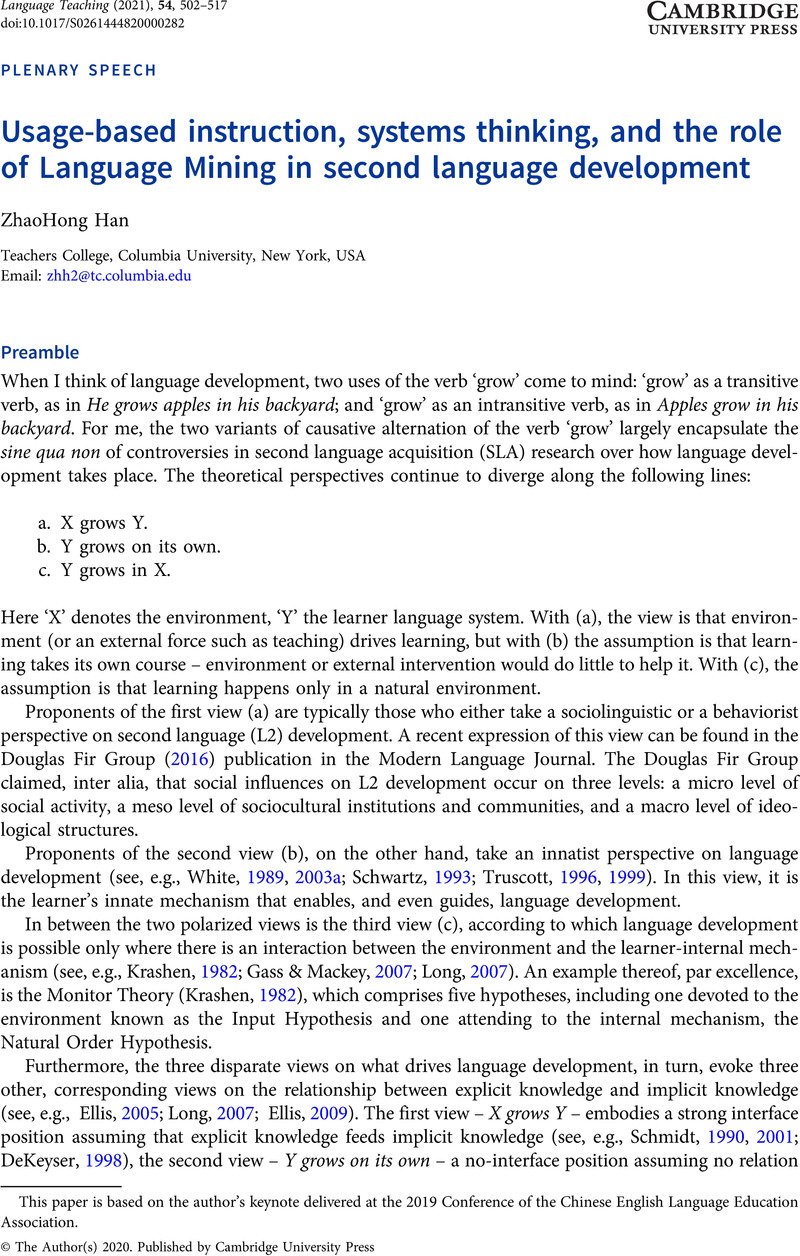Crossref Citations
This article has been cited by the following publications. This list is generated based on data provided by Crossref.
Hiver, Phil
Al-Hoorie, Ali H.
and
Evans, Reid
2022.
COMPLEX DYNAMIC SYSTEMS THEORY IN LANGUAGE LEARNING.
Studies in Second Language Acquisition,
Vol. 44,
Issue. 4,
p.
913.
Han, ZhaoHong
2023.
In English Medium Instruction you can walk and chew gum.
Frontiers in Psychology,
Vol. 14,
Issue. ,
Cerovac, Milorad
and
Keane, Therese
2023.
Technological Innovations in Education.
p.
85.
Wang, Yuanheng (Arthur)
and
Lu, Xiaofei
2024.
Conceptualizing Corpus-Based Genre Pedagogy as Usage-Inspired Second Language Instruction.
Corpus-based Studies across Humanities,
Vol. 1,
Issue. 1,
p.
133.






